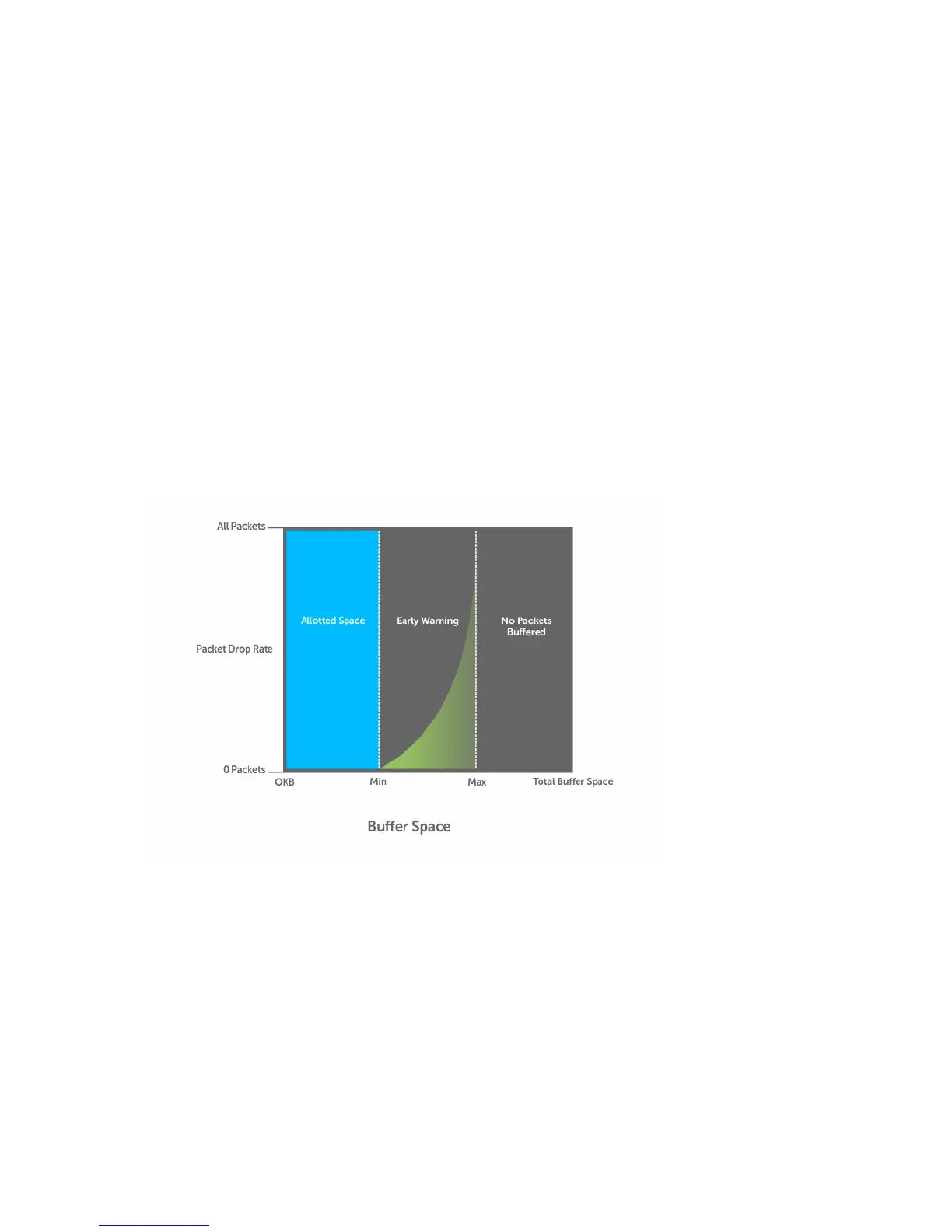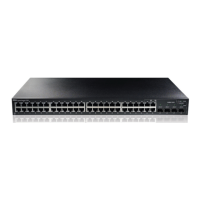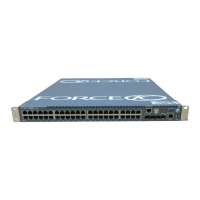Weighted Random Early Detection
Weighted random early detection (WRED) is a congestion avoidance mechanism that drops packets to
prevent buffering resources from being consumed.
The WRED congestion avoidance mechanism drops packets to prevent buffering resources from being
consumed.
Traffic is a mixture of various kinds of packets. The rate at which some types of packets arrive might be
greater than others. In this case, the space on the buffer and traffic manager (BTM) (ingress or egress) can
be consumed by only one or a few types of traffic, leaving no space for other types. You can apply a
WRED profile to a policy-map so that specified traffic can be prevented from consuming too much of the
BTM resources.
WRED uses a profile to specify minimum and maximum threshold values. The minimum threshold is the
allotted buffer space for specified traffic, for example, 1000KB on egress. If the 1000KB is consumed,
packets are dropped randomly at an exponential rate until the maximum threshold is reached (as shown
in the following illustration); this procedure is the “early detection” part of WRED. If the maximum
threshold, for example, 2000KB, is reached, all incoming packets are dropped until the buffer space
consumes less than 2000KB of the specified traffic.
Figure 106. Packet Drop Rate for WRED
You can create a custom WRED profile or use one of the five pre-defined profiles.
Creating WRED Profiles
To create WRED profiles, use the following commands.
1. Create a WRED profile.
CONFIGURATION mode
726
Quality of Service (QoS)

